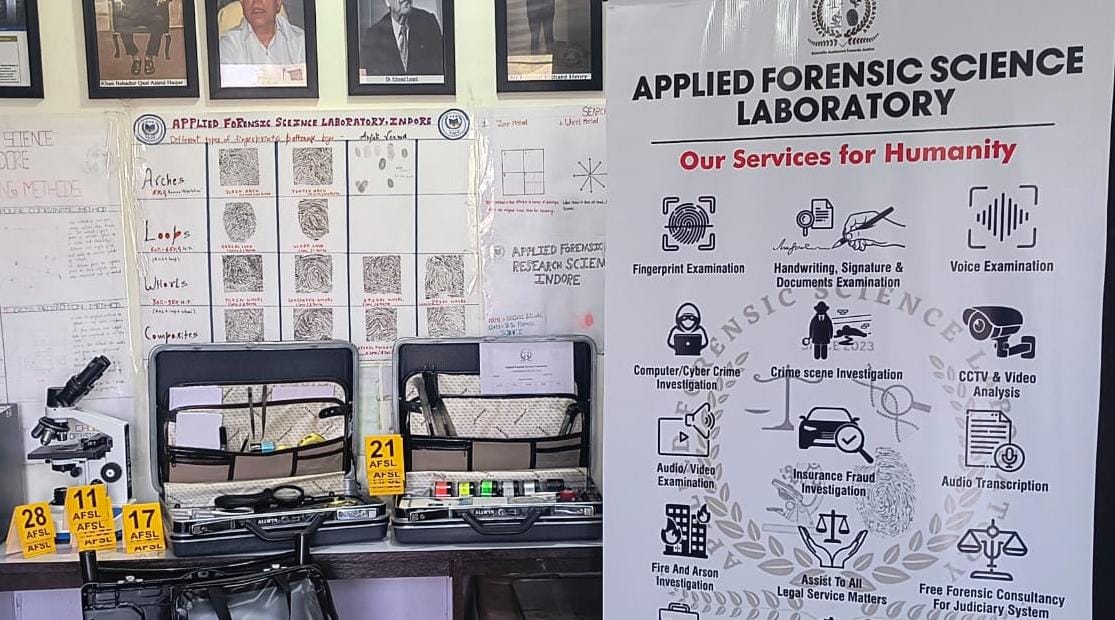As crime becomes more digital, forensic science must keep up. Advanced forensic software and tools are not just enhancing the efficiency and accuracy of investigations – they’re revolutionizing the way teams collaborate.
Crime scene investigation forms the backbone of criminal justice, playing a critical role in uncovering truths and ensuring justice. Over the years, technological advancements have revolutionized how evidence is identified, collected, analyzed, and presented. Traditional investigative methods, while effective in their time, often relied heavily on manual processes and subjective interpretation. However, with the advent of modern tools, investigators can now work with enhanced precision, speed, and accuracy.
With the evolution of technology, crime scene investigation is witnessing a paradigm shift. From tools that capture microscopic details to those that analyze vast digital data, the field is embracing innovation like never before.
Below are some modern and futuristic tools revolutionizing crime scene investigations:
#3D CRIME SCENE RECONSTRUCTION :-
3D crime scene reconstruction is a cutting-edge technology that creates detailed, three-dimensional models of crime scenes. Using laser scanners and photogrammetry, investigators can capture every angle and dimension of a scene with high precision. These reconstructions preserve the crime scene digitally, allowing investigators to analyze it long after the physical site is no longer accessible.
Moreover, 3D models enhance courtroom presentations, offering juries an immersive view of the scene, making the evidence more comprehensible.
With advancements in software, 3D reconstruction is becoming faster and more accurate, proving invaluable in modern forensic investigations.
#NANOTECHNOLOGY IN FORENSIC SCIENCE :-
Nanotechnology is revolutionizing forensic investigations by enabling the detection and analysis of evidence at an atomic or molecular level. Nano-scale sensors and materials are highly sensitive, making it possible to identify trace amounts of substances like drugs, explosives, or toxins that traditional methods might miss.
In forensic imaging, nanotechnology enhances the visualization of fingerprints, fibers, and other microscopic evidence, providing more precise details. Nano-particles can also be used in chemical analysis to detect residues or contaminants at crime scenes.
As research progresses, nanotechnology holds the potential to further miniaturize forensic tools, making them portable and more efficient, thus transforming how evidence is collected and analyzed in criminal investigations.
# AUTOMATED FINGERPRINT IDENTIFICATION SYSTEM (AFIS) :-
The Automated Fingerprint Identification System (AFIS) is a computerized tool used to store, analyze, and match fingerprints for criminal investigations. This system digitizes fingerprint data, allowing for quick comparison with extensive databases to identify suspects or verify identities.
AFIS utilizes advanced algorithms to analyze unique fingerprint patterns, such as ridges and minutiae points, ensuring highly accurate matches. It significantly reduces the time required for manual comparisons, making it an invaluable resource for law enforcement agencies.
Modern AFIS technology is integrated with other forensic systems, enabling seamless sharing of data across jurisdictions. Its efficiency and precision make it an essential tool in solving crimes and maintaining security.
#AUTOMATED FIREARM IDENTIFICATION SYSTEM (AFIS):-
The Automated Firearm Identification System (AFIS) is a digital tool designed to analyze and match ballistic evidence, such as bullets and cartridge cases, to specific firearms. It uses advanced imaging and pattern recognition technology to compare unique markings left on ammunition during firing, known as ballistic fingerprints.
AFIS creates a database of these markings, allowing investigators to quickly match evidence from a crime scene to firearms used in previous incidents. This helps link crimes, identify weapons, and trace their origins.
Widely used by law enforcement agencies, AFIS enhances the speed and accuracy of firearm investigations, making it a vital tool in combating gun-related crimes.
# PROTEOMES IN FORENSIC SCIENCE:-
Proteomes encompass the entire collection of proteins produced by a cell, tissue, or organism under specific conditions. In forensic investigations, proteomics—the large-scale study of proteins—has emerged as a powerful tool to complement DNA analysis. Proteins are more stable than DNA in certain environments, making them particularly useful when DNA is degraded due to time, heat, or environmental exposure.
One key application of proteomics in forensics is the identification of bodily fluids such as blood, saliva, or semen based on specific protein markers. Additionally, proteomics can help estimate the postmortem interval (PMI) by studying the degradation patterns of proteins in tissues, aiding in determining the time of death. Other potential uses include analyzing proteins in hair or bones to provide information about an individual’s health, lifestyle, or geographical origins.
Cutting-edge techniques like liquid chromatography and mass spectrometry allow for the precise detection and analysis of proteins, even from minute samples. As proteomic databases expand and technology advances, proteomes are expected to play an increasingly important role in solving complex forensic cases, especially in areas where traditional methods face limitations.
#FORENSIC DNA ANALYSIS AND NEXT GENERATION SEQUENCING(NGS) :-
Forensic DNA analysis has been a groundbreaking tool in solving crimes, identifying victims, and exonerating the innocent. Traditional DNA methods, such as short tandem repeat (STR) profiling, have been instrumental in criminal investigations due to their high accuracy in matching DNA to specific individuals. However, conventional methods have limitations, particularly when dealing with degraded, mixed, or low-quality samples often found at crime scenes.
Next-Generation Sequencing (NGS) is revolutionizing forensic DNA analysis by addressing these challenges and providing a broader range of applications. Unlike traditional methods, which focus on specific STR markers, NGS enables the sequencing of entire genomes or targeted regions with unprecedented detail. This technology can analyze single-nucleotide polymorphisms (SNPs) and mitochondrial DNA, offering insights into ancestry, biogeographical origins, and even certain physical traits. For example, NGS can help predict eye color, hair color, and skin tone, which can aid investigators in developing a suspect profile.
Another advantage of NGS is its ability to handle degraded or minute DNA samples. By amplifying and sequencing even tiny fragments of DNA, NGS ensures that evidence from older or compromised cases can still yield actionable results. It also excels in analyzing mixed DNA samples, such as those containing contributions from multiple individuals, which is a common challenge in forensic investigations.
NGS is not limited to human DNA; it can analyze microbial and environmental DNA as well. This capability has applications in cases involving bioterrorism, postmortem interval estimation, or identifying environmental sources linked to a crime scene.
Although NGS offers significant advantages, its adoption in forensic science is still evolving. Challenges include the high cost of equipment, the need for specialized training, and the requirement to standardize protocols for court admissibility. Despite these hurdles, the potential of NGS to enhance the accuracy and scope of forensic investigations is immense.
As NGS becomes more accessible and integrated into forensic workflows, it is expected to transform the field. By providing comprehensive, fast, and reliable data, this technology not only advances criminal justice but also opens new avenues for research in forensic science.
# ROBOTICS IN CRIME SCENE INVESTIGATION:-
Robotics is becoming an essential tool in modern crime scene investigations, particularly in situations that are hazardous or inaccessible to humans. Robots equipped with advanced sensors, cameras, and manipulators can safely navigate crime scenes contaminated by chemical spills, explosives, or biohazards, reducing risks to investigators.
These robots can collect evidence such as fingerprints, biological samples, or trace materials with precision, ensuring the integrity of the crime scene. Some advanced models are equipped with artificial intelligence, enabling them to analyze data or identify objects in real time. For instance, drones, a type of robotic technology, are often used for aerial surveys, creating 3D maps of large crime scenes without disturbing evidence.
As robotics technology evolves, future systems may include autonomous robots capable of conducting preliminary investigations, documenting evidence, and transmitting data remotely. This innovation not only enhances efficiency but also ensures the safety and accuracy of crime scene investigations.
# MOBILE FORENSIC VANS :-
Mobile forensic vans are innovative, self-contained units that bring forensic technology directly to crime scenes. These specialized vehicles are equipped with a range of tools for on-site evidence collection, including digital forensics equipment to extract data from mobile phones, computers, and other electronic devices. They also contain secure storage for evidence, ensuring proper chain of custody from the scene to the lab.
Mobile forensic vans are invaluable in fast-paced investigations, particularly in remote or high-risk locations, as they allow investigators to analyze data, perform initial assessments, and preserve evidence in real-time. This capability speeds up investigations, especially when dealing with critical digital evidence that might otherwise be compromised or lost.
As forensic technology continues to evolve, these vans are likely to become more advanced, supporting a wider range of tools and capabilities to ensure the timely and accurate processing of evidence at crime scenes.
CONCLUSION
The integration of modern and futuristic tools into crime scene investigations is reshaping the landscape of forensic science. Technologies such as 3D reconstructions, AI, NGS, and robotics are enhancing the accuracy, efficiency, and scope of investigations, enabling investigators to tackle complex cases that were once insurmountable. These innovations not only aid in solving current crimes but also offer new avenues for cold cases and evidence preservation.
As these tools continue to advance, they will further enhance the capacity to analyze evidence, predict crime patterns, and ensure the integrity of investigations. However, their successful implementation depends on overcoming challenges such as cost, training, and ethical considerations. Moving forward, a combination of technology and human expertise will be essential in ensuring that justice is served, making crime scene investigations more effective and reliable than ever before.

